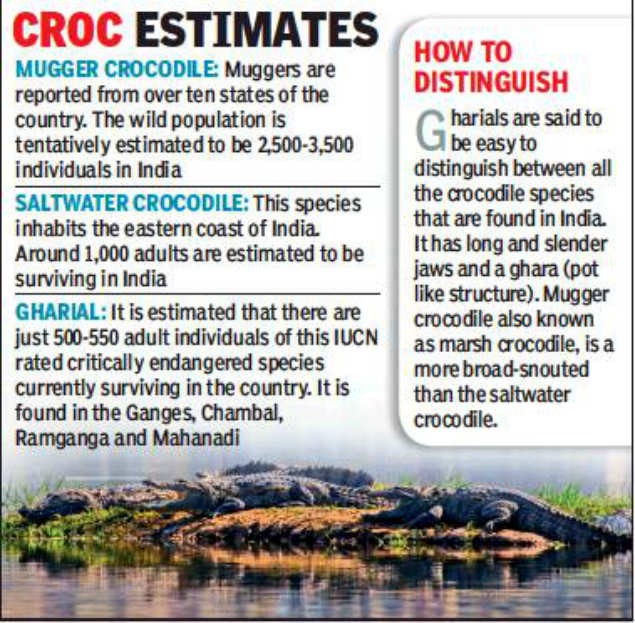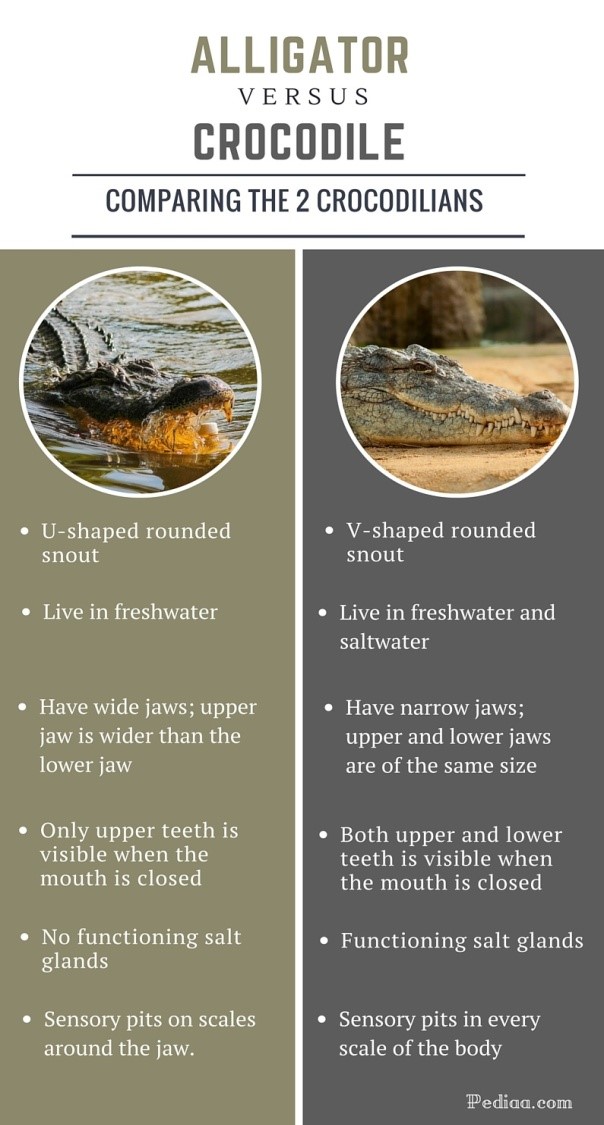Description

Copyright infringement is not intended
Context: Some 50 mugger crocodiles have died in the last one month in a prominent waterbody of Rajasthan’s Kota city as a result of it being filled up for developmental activities.
About Kala Talab:
- The Kala Talab (‘black pool’) is connected via a canal to the Chambal river.
- It is rich in aquatic life including mugger crocodiles, but has not been declared a wetland.
- However, the rules of the Wild Life (Protection) Act, 1972, are applicable here as it concerns a Schedule I animal.
Crocodiles in India
There are three species of crocodilians—saltwater, Mugger and Gharial.
Mugger
- The mugger crocodile, also called the Indian crocodile, or marsh crocodile, is found throughout the Indian subcontinent.
- It is listed as vulnerable by IUCN.
- The mugger is mainly a freshwater species, and found in lakes, rivers and marshes.
Gharial
- The Gharial or fish eating crocodile is native to the Indian subcontinent.
- It is listed as Critically Endangered by IUCN.
- Small released populations are present and increasing in the rivers of the National Chambal Sanctuary, Katarniaghat Wildlife Sanctuary, Son River Sanctuary and the rainforest biome of Mahanadi in Satkosia Gorge Sanctuary, Orissa.
- The Gharial is found in only some rivers of India which include:
- Chambal
- Girwa
- Ganges
- Yamuna
- Kali
- Kosi
- Gandak
Saltwater Crocodile
- It is the largest of all living reptiles.
- It listed as least concern by IUCN.
- It is found throughout the east coast of India.
- Odisha is the only State in India having all three species gharial, mugger and saltwater crocodile.
- The State forest department began conservation of these crocodile species in 1975 by establishing three rearing centres Tikarpada for gharials in Angul district, Ramatirtha for muggers in Mayurbhanj and Bhitarkanika for saltwater crocodiles in Kendrapara district.

https://www.downtoearth.org.in/news/wildlife-biodiversity/50-mugger-crocodiles-die-in-kota-in-a-month-81914












